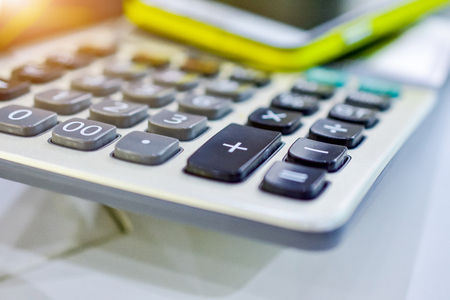What Are Quarterly Estimated Taxes?
If you’re a freelancer, gig worker, or self-employed in the U.S., you’ve probably heard about “quarterly estimated taxes.” But what exactly does that mean? Let’s break it down in simple terms.
Quarterly Estimated Taxes: The Basics
Quarterly estimated taxes are payments made to the IRS four times a year. Unlike traditional employees who have taxes automatically withheld from each paycheck, freelancers and self-employed people need to estimate and pay their own taxes throughout the year. This helps make sure you don’t end up with a huge tax bill (and possible penalties) when you file your annual return.
Who Needs to Pay Quarterly Estimated Taxes?
The IRS requires quarterly estimated tax payments if you expect to owe at least $1,000 in federal income tax for the year after subtracting any withholding and refundable credits. This typically applies to:
- Freelancers and independent contractors
- Self-employed business owners
- People with side gigs or multiple sources of income (like Uber drivers, Etsy shop owners, consultants)
- Anyone who doesn’t have enough tax withheld from other income sources (such as investments or retirement distributions)
Quick Reference: Do You Need to Pay?
| Income Source | Do You Need to Pay Quarterly? |
|---|---|
| Salaried employee with enough withholding | No |
| Freelancer/self-employed/gig worker | Yes, if you expect to owe $1,000+ |
| Investor/landlord/other untaxed income | Yes, if not enough is withheld elsewhere |
Why Does the IRS Require These Payments?
The U.S. tax system is “pay-as-you-go.” That means you’re supposed to pay taxes as you earn money throughout the year—not just when you file your return in April. If you don’t pay enough during the year, the IRS can charge you penalties and interest. Making quarterly payments keeps you on track and out of trouble with Uncle Sam.
2. Who Needs to Pay Estimated Taxes?
If you’re a freelancer, independent contractor, or self-employed professional working in the U.S., understanding whether you need to pay estimated taxes is essential. Unlike traditional employees, freelancers don’t have taxes withheld automatically from their paychecks. Instead, the IRS requires many self-employed individuals to make quarterly estimated tax payments throughout the year.
IRS Guidelines for Paying Estimated Taxes
The IRS has clear rules on who must pay estimated taxes. Generally, you are required to make these payments if both of the following apply:
- You expect to owe at least $1,000 in federal tax for the year after subtracting your withholding and refundable credits.
- Your withholding and refundable credits will be less than the smaller of:
- 90% of the tax you’ll owe for the current year, or
- 100% of the tax you owed last year (as shown on your previous year’s return).
Who Typically Needs to Pay Estimated Taxes?
If you fit into one of the categories below, you’ll likely need to pay estimated taxes:
| Category | Examples |
|---|---|
| Freelancers & Independent Contractors | Writers, designers, developers, consultants, photographers |
| Sole Proprietors & Small Business Owners | Shop owners, online sellers, gig workers |
| Anyone with Significant Non-Wage Income | Rental income, interest, dividends, capital gains |
Special Note for First-Time Freelancers
If this is your first year freelancing or earning 1099 income, keep in mind that even small amounts of untaxed income can trigger the need for quarterly estimated payments. Review your income regularly and use IRS Form 1040-ES worksheets or a tax professional to help estimate your obligation.
How to Determine If You’re Required to Pay
Use this quick checklist to see if estimated taxes apply to you:
- Do you expect to owe $1,000 or more in federal taxes after withholding and credits?
- Are you receiving most of your income without any tax withheld (such as 1099 forms)?
- Will your withholding and credits cover less than 90% of this year’s tax bill or less than 100% of last year’s bill?
If you answer “yes” to these questions, it’s time to start planning for quarterly estimated payments.
![]()
3. How to Calculate Your Estimated Tax Payments
Step 1: Estimate Your Total Income for the Year
Start by making your best guess of how much money you expect to earn this year from all freelance or self-employed sources. Look at your past income, current contracts, and any new clients or projects you expect. If your income varies month-to-month, use an average based on recent months.
Step 2: Subtract Business Expenses
The IRS only taxes your net profit—what’s left after business expenses. List out all deductible expenses, such as:
- Home office costs
- Supplies and equipment
- Professional services (like accounting or legal fees)
- Travel related to work
- Marketing and advertising
Add these up and subtract from your total income. This gives you your estimated net income for the year.
Example Table: Estimating Net Income
| Description | Amount ($) |
|---|---|
| Total Expected Income | 50,000 |
| Minus: Home Office Expense | -2,000 |
| Minus: Supplies & Equipment | -1,500 |
| Minus: Marketing Costs | -1,000 |
| Estimated Net Income | 45,500 |
Step 3: Figure Out Your Self-Employment and Income Taxes
You’ll need to pay both self-employment tax (which covers Social Security and Medicare) and federal income tax. Here’s how they break down:
- Self-Employment Tax: This is typically 15.3% of your net earnings.
- Federal Income Tax: Rates vary based on your total taxable income and filing status. Use the IRS tax brackets to estimate this amount.
Quick Calculation Table (Example)
| Description | Calculation Example ($) |
|---|---|
| Net Income (from previous table) | 45,500 |
| Self-Employment Tax (15.3%) | 6,952 (45,500 x 0.153) |
| Estimated Federal Income Tax (Assume 12%) | 5,460 (45,500 x 0.12) |
| Total Estimated Taxes Owed for Year | 12,412 |
Step 4: Divide by Four for Quarterly Payments
The IRS wants freelancers to pay as they go. Take your total estimated taxes owed for the year and divide by four. This tells you how much you should send each quarter.
| Description | Calculation Example ($) |
|---|---|
| Total Estimated Taxes for Year | 12,412 |
| Quarterly Payment Amount (Divide by 4) | 3,103 (12,412 ÷ 4) |
Step 5: Adjust as Needed Throughout the Year
If your income changes during the year—maybe you land a big client or lose one—update your estimates. It’s a good idea to check in every few months so you don’t overpay or underpay when tax time comes around.
4. When and How to Pay the IRS
Key Deadlines for Quarterly Estimated Tax Payments
If you’re a freelancer or self-employed in the United States, you’ll need to pay estimated taxes every quarter. The IRS has set four main deadlines each year. Missing these dates could mean penalties, so it’s important to mark your calendar!
| Quarter | Income Period | Payment Due Date |
|---|---|---|
| Q1 | January 1 – March 31 | April 15 |
| Q2 | April 1 – May 31 | June 15 |
| Q3 | June 1 – August 31 | September 15 |
| Q4 | September 1 – December 31 | January 15 (of the following year) |
If any due date falls on a weekend or federal holiday, the deadline moves to the next business day.
How to Make Your Quarterly Tax Payments
You have several options for submitting your quarterly estimated taxes to the IRS. Here are the most common methods:
Online Payment Options (Fastest & Easiest)
- IRS Direct Pay: Pay directly from your bank account for free at IRS Direct Pay website.
- EFTPS (Electronic Federal Tax Payment System): Set up an account at EFTPS.gov. You can schedule payments in advance and keep a record of your transactions.
- Credit or Debit Card: Use an approved payment processor listed on the IRS website. Note that processing fees may apply.
Paying by Mail (Traditional Option)
- Check or Money Order: Make it payable to “United States Treasury.” Include Form 1040-ES payment voucher for the correct quarter and your Social Security Number.
- Mailing Address: Find the correct mailing address for your region in the Form 1040-ES instructions on the IRS website.
- Tip: Always mail early to avoid late payments due to postal delays!
Using Tax Software or Your Accountant
- If you use tax software, it often allows you to pay estimated taxes directly through the platform.
- Your accountant can also help set up electronic payments or provide you with filled-out vouchers for mailing.
What Information You’ll Need When Paying
No matter which method you choose, always have these details ready:
- Your Social Security Number or Employer Identification Number (EIN)
- The tax year and quarter you’re paying for
- Your bank information if paying electronically, or your checkbook if mailing a payment
- A copy of your completed Form 1040-ES voucher if sending by mail
Staying Organized is Key!
Create reminders a few weeks before each deadline, keep digital or paper copies of all payment receipts, and regularly review your income so you don’t underpay or overpay throughout the year.
5. Tips for Staying Compliant and Avoiding Penalties
Expert Strategies for Freelancers
Staying on top of quarterly estimated taxes can feel overwhelming, but with a few key strategies, you can keep your finances organized and avoid costly mistakes. Here’s how to stay compliant with IRS rules and steer clear of penalties:
Keep Accurate Records
Good recordkeeping is your first line of defense. Track every dollar you earn and all your deductible expenses—think home office supplies, business travel, or software subscriptions. Use apps like QuickBooks Self-Employed, FreshBooks, or even a simple spreadsheet to log everything as it happens.
Sample Recordkeeping Table
| Date | Description | Income | Expense | Category |
|---|---|---|---|---|
| 01/10/2024 | Website design project payment | $1,200 | Business Income | |
| 01/12/2024 | Laptop purchase | $900 | Equipment Expense | |
| 01/15/2024 | Internet bill (home office) | $60 | Utilities Expense |
Avoid Common Mistakes with Estimated Taxes
- Missing Deadlines: The IRS expects quarterly payments by April 15, June 15, September 15, and January 15. Mark these dates on your calendar or set up automatic reminders.
- Underestimating Income: Guessing too low can lead to underpayment penalties. Review last year’s tax return or use IRS Form 1040-ES worksheets to estimate accurately.
- No Separate Account: Consider opening a dedicated savings account for taxes. Move a percentage of each payment you receive into this account so you’re not scrambling at tax time.
- Poor Documentation: Keep digital copies of receipts, invoices, and bank statements. The IRS may request proof if you’re ever audited.
Pitfalls That Can Lead to Penalties (and How to Dodge Them)
| Pitfall | How to Avoid It |
|---|---|
| Not making payments on time | Set up online payments via the IRS Direct Pay system or EFTPS before each deadline. |
| Forgetting state estimated taxes (if applicable) | Check your state’s tax website to see if you owe quarterly taxes at the state level too. |
| Miscalculating deductions or credits | If unsure, consult a CPA or use trusted tax software to double-check your numbers. |
| Inefficient record storage | Use cloud storage or bookkeeping apps to back up records in case your computer fails. |
The Bottom Line: Stay Organized Year-Round
The best way to avoid penalties is to treat your freelance business like any other business—organized, disciplined, and always ready for tax season. Consistently tracking income and expenses, paying on time, and seeking help when needed will keep you in good standing with the IRS.


